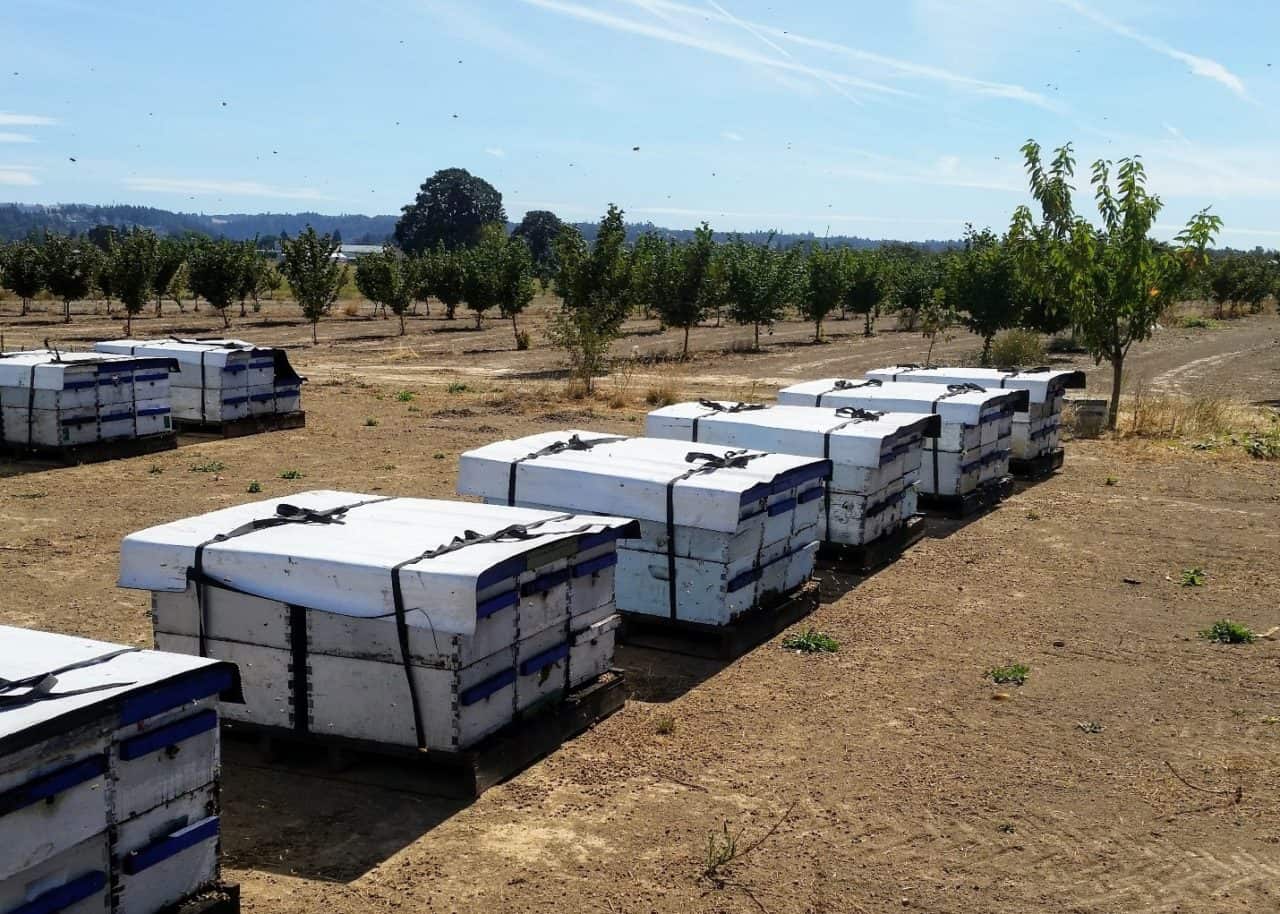Having worked on both the Northern California Tech Transfer Team and Pacific Norwest Team has given me a unique opportunity to compare and contrast management styles across regions. One thing that I immediately noticed when I first came to the Oregon team was the use of rain covers or shelters over the fall and winter months, especially in the wet Willamette Valley. It should come as no surprise that rain covers are not used extensively in California, considering in recent years the winter rainfall has been insignificant, except in 2017 (and 2019 so far!). However many Oregon beekeepers have come to the conclusion that rain covers are an essential aspect of fall preparation/winter management. Corrugated plastic sheets strapped over the pallet (4 or 6-way) with die-downs is the most common method, but other materials can be used as long as they are durable and waterproof. From my discussions with commercial beekeepers who use rain covers, three main benefits were repeatedly brought up. I will outline these below and also touch on a couple drawbacks to bear in mind when considering this management technique.

The first major benefit of using rain covers is the preservation of equipment, which represents a huge investment by the beekeeper. Contact with water is detrimental to exposed woodenware and speeds up the decomposition process. Even well-painted or treated wood will rot when left in wet conditions year after year. Although nothing short of indoor storage is 100% effective at keeping equipment dry, using a rain cover can help immensely. In regions with snowy winters, a cover can prevent melting snow from dripping over the hive body as weather warms in the spring. Even in the dead of winter, the heat from a strong colony can melt snow which can easily seep into exposed wood or drip onto the colony if the cover has gaps or isn’t leakproof.
This brings me to the second advantage of using rain covers – increased ventilation. It might seem counterintuitive, but using rain covers can make it easier to ensure hives are well-ventilated. A common and deadly problem for overwintering colonies is condensation forming on the lid or inner cover and dripping down on the clustered colony. An airtight hive is dangerous because humid air needs a way to escape, and most commercial beekeepers go out of their way to ensure good ventilation. Some use lids that have thin spacers with gaps around the edges, allowing wet, warm air to escape. Others drill holes in the top box, while some simply use older beat up lids that have plenty of gaps. In all of these cases, having a rain cover allows damp, CO2 laden air to vent out while preventing rain from finding it’s way into the hives.

Lastly, using a rain cover in the fall can be a great way of discouraging robbing. This activity tends to pick up in the late summer when days are getting shorter, bee populations have peaked, and the older foragers start to get more aggressive as their time on earth runs out. Pulling honey late, feeding sugar syrup, or even performing normal fall management can exacerbate robbing as colonies are left open and the temptation to rob overcomes “bored” foragers. Once robbers get a taste for stolen honey, they will not go back to normal foraging, making prevention even more important. Using a rain cover early in the fall cuts down on robbing (in addition to an entrance reducer) because the most vulnerable part of a hive are gaps in the hive body and lid, which are normally exposed. If robbers really wanted to get under the rain covers they could, but it seems that having these gaps out of sight is enough to discourage most of them. If you observe robbers hovering around a hive, you will notice they try to target dark spaces or cracks to sneak into. Having a cover means these vulnerabilities are out of sight, out of mind.
The main drawback of using rain covers is that accessing the colonies is more difficult while they are on. It is not possible to pop a few lids for a quick check without first loosening the straps and setting the cover aside, where it could blow away or get trampled if not careful. Also, the rain covers will need to be put away for more than half the year, and extra storage space is a rare and valuable commodity for most beekeepers. However, in all but the driest climates, rain covers have many advantages and may be worth a try!
